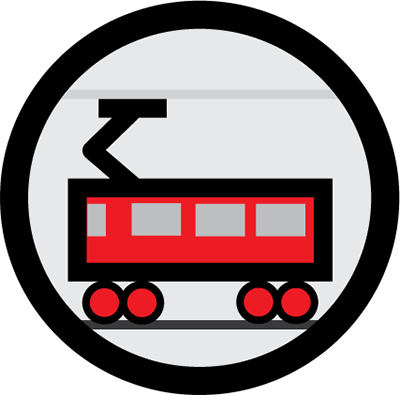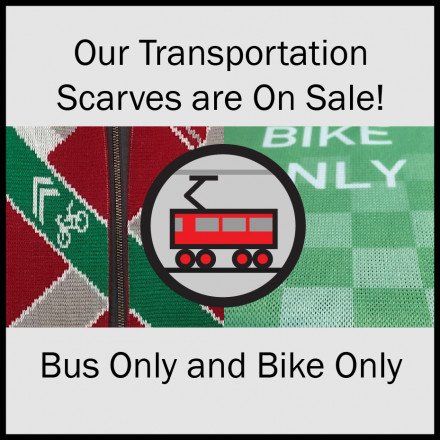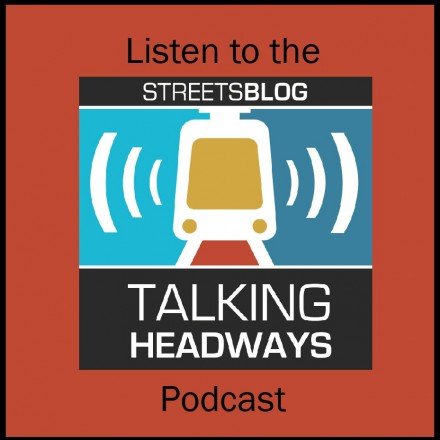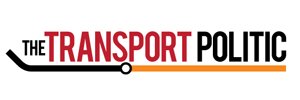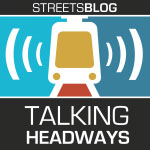(Unedited) Podcast Transcript 319: Shared Mobility, Vaccines, Vacations
This week we’re again joined by Shared Use Mobility Center Founder in Residence Sharon Feigon. Sharon talks with us about what she hopes the focus will be for the next administration, how shared mobility has fared during the pandemic, and her plans for the future.
You can listen to the show at Streetsblog USA. Below is a full (unedited) transcript:
Jeff Wood (1m 27s):
Well, Sharon Feigon, and welcome back to the talking head ways podcast.
Sharon Feigon (1m 34s):
Thank you for inviting me.
Jeff Wood (1m 36s):
Well, so this is multiple times you’ve been on the show and we appreciate each time you con it’s been a kind of a crazy 2020, and it’s only now starting into 2021. How are you doing so far?
Sharon Feigon (1m 47s):
Well, I’m doing all right. It has been a really crazy challenging 2020 and these first days of 2021 have been pretty unprecedented as well. So yeah, it’s a challenging time. And especially in our industry transit, you know, which has struggled in so many different ways and then wow, with the pandemic, you know, just this dramatic change, I’m an optimist. So I kind of see the, the glimmers, you know, in the tragedies that we’re learning some new things and hopeful that we’re going to have a much better 20, 21, and we can apply some of what we learned.
Jeff Wood (2m 40s):
Well, so I guess that’ll be my first question. What are you looking forward to in 2021?
Sharon Feigon (2m 45s):
Well, I’m looking forward to getting a vaccine.
Jeff Wood (2m 51s):
I think, I think a lot of us are,
Sharon Feigon (2m 53s):
Yeah. And being able to travel and do things and see people and hug people.
Jeff Wood (3m 3s):
What’s so crazy. We haven’t talked to actually, since, you know, the pandemic started, man, we’ve emailed and stuff, but we haven’t chatted. And it’s been interesting because, you know, the first thing that happened for me in the pandemic in the United States was canceling my flights in my hotel room in Chicago for the shared use mobility summit and going through all that rigmarole because all this stuff started happening like two weeks before or the week before. So, you know, what was that like, I guess we didn’t ever get to chat about that. I’m fascinated by that situation. Cause it just kinda hit real quick and then everything was gone.
Sharon Feigon (3m 33s):
No, that was really a crisis moment because we had been building toward our summit and it was going to be the biggest one we’d had. And we were so excited about all the different speakers we had engaged and we’d been working really hard on making sure that we covered the issues. Well, you know, just all the things each year and the summit had always been about connections and people meeting each other. And especially because we draw off from community, from government, from the industry, from the companies and we have this pretty unique mix.
Sharon Feigon (4m 17s):
There are a lot of other summits out there that, you know, focus on one sector or another, but it’s the mix and bringing people together to form partnerships, to get new ideas that I think has been our success. So we kept holding on, you know, thinking how we’ll be able to have this. And then we realized, no, we just can’t do it. And you know, we went through this whole long thing because we paid all these deposits to the hotel and the catering. And so it was a big financial mess, but we pivoted really fast to doing it on zoom.
Sharon Feigon (5m 3s):
And we had just gotten before the pandemic, like I would say within a month before everything started, I had used zoom once or twice with different people. And I thought, wow, some C needs zoom because we have staff in California as well as Chicago and also a couple of people on the East coast. And I just thought, well, this would be really good to facilitate stuff. And so we had just gotten this zoom subscription and then zoom became, you know, like
Jeff Wood (5m 37s):
Now it’s like the default like Kleenex,
Sharon Feigon (5m 40s):
Right. That, and I was like, wow. And we already have it. But anyway, we, we were one of the first, maybe the first summit to go virtual. And we had all these calls afterwards from people who wanted to know how we did it. And we all spent some time doing consulting and doing conferences. There were a couple articles written about some CS approach to this. So yeah, it was kind of funny because it was just, you know, we tried to think of everything we could do to foster connection online, but you know, it’s gone way beyond that now.
Jeff Wood (6m 23s):
Right. Well, so there’s going to be a conference this year. I imagine too.
Sharon Feigon (6m 27s):
Yes. The conference is actually already scheduled. It’s April 16th to 19th. It will not be like straight three days, you know, it’s parts of those days and it’s all getting worked out, but yeah, we’re going to keep going. We’re going to do the virtual summit again and then hope for in-person after that, this whole thing, we’re not going to stay for 12, but we have found we’ve been doing a lot of workshops on online and you know, some of them have worked out really well.
Sharon Feigon (7m 7s):
And one thing that’s kind of interesting with this format is you get a lot of attendance from people who otherwise wouldn’t make it. So you get a lot of international participants and also there isn’t the same affordability issues with traveling. Although there is the affordability issue for the organization, even though it costs less to put it on, there still is a cost. So figuring out how to, you know, have sponsors and charge something, but not too much like all those,
Jeff Wood (7m 43s):
Right. If they’re all interesting questions, it’s so interesting because I think that, and I’ve been keeping tabs on, on webinars and stuff. And I have a page on my site that shows kind of, what’s coming up in the next couple of weeks and we’ve been trying to keep tabs on it. And there’s been so many of them and there’s so many things going on online that it can be a little bit overwhelming sometimes. And so I’m excited to get back to kind of a regular schedule, but I also wonder if part of the reason why it’s kind of overwhelming is just because everything’s overwhelming. It’s just like, how can you be expected to pay attention to everything for so long and during the pandemic and all this other stuff going on. So maybe we need to give ourselves a little bit of a break on trying to do that. But I think after all this kind of dust settles, it’ll be a different way forward, which will be the same thing with a lot of the stuff we’re going to talk about too.
Jeff Wood (8m 28s):
I mean, there’s just so many things have been up-ended and maybe there’s a better way.
Sharon Feigon (8m 33s):
Yeah, definitely. There are, I think some fundamental changes in commute patterns, which are really going to impact the industry and change what some of the needs are and how we do things. So I think that, you know, people will go back to offices and workplaces, but for those who could work from home, I don’t think they’re going back a hundred percent and it’s a big deal in terms of commuting. If you have a 20% reduction, I mean, if you had a 40% reduction, that just is enormous,
Jeff Wood (9m 14s):
There’s all these equilibriums. I know that for example, here in the Bay area, there was discussion about making large employers have mandatory work from home things and people were getting upset because there’s whole business districts that depend on workers for, you know, businesses and things like that for caterers, for restaurants and things like that. So it’s just like this navigation of this shift, because if you’re doing one thing, it affects another thing. And so anytime you switch something out, it’s going to impact something else in either a negative or a positive way, but you’re kind of navigating this weird terrain. I’m wondering if you’ve seen that as well.
Sharon Feigon (9m 48s):
Yeah, definitely. You know, I think that, you know, when we look at reducing climate footprint, a lot of people have talked about, you know, Oh, like work from home, you know, that’s a great way to reduce CO2 emissions, but then, you know, you really see during this pandemic, like the impact on neighborhood businesses and the economics of places. And at the same time, there’s also a shift in terms of like delivery and, you know, small retail. There were a lot of things happening with that anyway, where there were difficulties and challenges for those retail establishments and this only accelerated it even more.
Sharon Feigon (10m 37s):
So, I mean the sort of ideal scenario, you know, outcome, I think is that we are paying a lot more attention to land use and this 15 minutes city notion, which definitely has some serious challenges in terms of equity. And, you know, only works if the housing and the incomes and the jobs cross the full spectrum so that people can live near where they work, but that decentralized very community focused neighborhood structure would also improve the economics a lot.
Jeff Wood (11m 21s):
I’m wondering also you mentioned kind of deliveries and that’s been something that’s accelerated tremendously because of the pandemic, the change in structure of how people get goods and services, there’s a freight perspective, but how does that affect the kind of person mobility perspective of all this, you know, from what you’ve seen?
Sharon Feigon (11m 38s):
Well, I think that from the person perspective, there’s the whole issue of all the delivery vehicles and the way that they take up the streets. I mean, the congestion on highways, you know, that people have talked about, well, there are all these people using cars now, and there’s more, there’s congestion in some spots, but most of the data I’ve seen, a lot of the congestion has to do with that travel for freight and delivery. And there’s been such an uptake in that. And then, you know, when you’re dropping things off and picking things up, depending on the environment, you’re in their issues from a carbon standpoint, and they’re also issues just in terms of interfering with the streets and the pedestrian nature of, you know, one of the pluses I in the pandemic has been actually closing streets and making them more available for walking.
Sharon Feigon (12m 41s):
And just an understanding that we have so much pavement and parking. And I mean, we knew this, you know, for, or at least those of us working on these topics for seven years. I think we’re really aware of that. But I think that there’s been a new appreciation in some certainly in a lot of cities for this is land that can be used in other ways, for people to get outside, to move around, to have social activities occur in those places.
Jeff Wood (13m 16s):
It’s been really amazing to see how businesses have shifted their mindset from, we need that single parking space in front of our building too. We need that space for our diners and our customers. So many places in San Francisco here have taken the parking space and made it into, you know, six, seven, eight stalls for people. Whereas usually it would have been one parked car for an hour, right. And that shift, I think people can see what that actually means now. And the demonstration of it has been really powerful, even though we’ve done it with parklets and those types of things before I think this, this shift so fast has actually kind of opened some people’s eyes and, and I’ve heard in some spaces that, Hey, I don’t want to go back to that the way it was before.
Jeff Wood (13m 57s):
And I hope that that’s a majority opinion, but that’s kind of anecdata to a certain extent, but it seems like a positive thing that’s come out of this kind of horrible situation generally.
Sharon Feigon (14m 8s):
Yeah. I, I do think that too, and even, you know, here in Chicago where it’s cold out, you see all these elaborate igloos and different tent structures taking up a lot of street space in all different neighborhoods and, you know, like right in the center of the street in some cases, but certainly taking away any parking that existed and people are eager. So yeah, how that plays out going forward is going to be very interesting. But I think what we’ve learned is that it can be done and that you can use the street differently.
Sharon Feigon (14m 52s):
I mean, I read an article just the other day that was talking about changing sort of the relationship of the neighbors to the street and that people could on a street decide how they wanted their street used and what sort of things should occur there and whether to allow parking. And I was like, wow, I remember we were reading Donald Shoup and talking about this like 20 years ago, you know, and now it’s like an idea that could take hold in some places and, you know, spread
Jeff Wood (15m 29s):
It’s more mainstream now. It feels like, so you’re stepping back from the executive director role at the shared use mobility center. When did you decide to do that and what will you be doing going forward?
Sharon Feigon (15m 40s):
Well, I decided to do it. I think I told the board almost a year ago, maybe eight months ago, something like that. I told him I was going to do it. They didn’t actually believe me, I think initially. So there was kind of this period of time of like really, and then finally I was like, okay, I really am going to do this. Like, we need to get the committee together, you know, figure this out. So they were like, okay, why am I doing it? You know, in some ways like, I mean, I love this work. I’m very passionate about making our communities work better.
Sharon Feigon (16m 23s):
And I care about sort of like the whole picture in terms of mobility for all the equity, the environment, the design, and really it’s always been about how do you connect with people and build community and a sort of healthy way. So I don’t expect to remove myself from all of that, but I just wanted to slow down a little bit in terms of this work and not work a million hours a week and just focus on family and other things that are important to me that need my attention.
Jeff Wood (17m 7s):
And you were still going to be around. It’s not like you’re retiring and going to Costa Rica or something. It’s a, you’re here in Chicago. You’ve been an activist there forever. It seems like. Are there any memories that you have of working in Chicago and doing this work that kind of stand out to you over the last decade or so?
Sharon Feigon (17m 23s):
Yeah, I mean, I wish I could travel. I think we always should control and sort of my ideal scenario is that, you know, my role as CEO, executive director ending, and then I do have this new title called founder in residence, but there shouldn’t be this like two, three months, you know, travel that occurs, I assume the new role, but like a gap year possible, so that we’ll have to wait. So that’s pushing me forward with this other stuff. But yeah, well I grew up in Chicago. I mean, I think I’ve been interested in transportation, just like always because growing up, riding the train and the L and you know, all that, and just knowing the city, both my parents were born in Chicago and loved Chicago, you know, so I just kind of feel like I was shaped by that.
Sharon Feigon (18m 25s):
You know, I was at the center for neighborhood technology for many years, working with my dear friend Scott Bernstein. And that just covered all of the issues. I think that I continued to work on location efficiency, searching for the hidden assets of cities, understanding that place really matters. And then starting and growing, I go car-sharing and then we sold, I go and nonprofit social venture, and that grew so big and effective that the private market was willing to pay a lot of money to C and D to purchase it.
Sharon Feigon (19m 8s):
And then C and T allocated a little bit of those funds to help me start the shared use mobility center. And so my work there, it was always transit in the center that transit was so important, but all these new and emerging modes, it was about how do we effectively connect them with transit and create a lot of choices and options for people. So they don’t have to own a car, both because the car is expensive because it pollutes and causes congestion just because of all the different ILS. So the idea was to create a lot of integrated options and choices, which always started with walking and transit and then active transportation has really turned out to also be a very important health area.
Sharon Feigon (20m 4s):
So, I mean, there just a lot of benefits to all these modes. So the work that I’ve been doing at the shared use mobility center, it started with, you know, the TNCs were just getting going, and there was like, you know, would anybody ride in these calls? You know, the fear of riding with strangers and what was this all about? And that, you know, and we were all spending time, I think defending the taxi cab industry, which frankly needed to get its act together. I think one of the benefits actually evolve a shared mobility that’s happened is it’s pushed the existing systems to do better.
Sharon Feigon (20m 47s):
Like transit, I think has made big strides under the pressure of knowing there are a lot of rising choices and options, and it’s also the technology catching up and making it possible to track where people aren’t going and need to go, you know, to understand that better and the data. And also you can have more flexible on demand routing and all of those things have emerged over this last period. And it’s really been exciting.
Jeff Wood (21m 20s):
It’s been interesting to see how stuff has changed so quickly too, because you had the TNCs and the ride hailing companies starting it off. And then you saw this kind of shift to the discussion about scooters and personal mobility devices. And then that’s continued, and now you have bike sharing too. You have transit agencies like capital Metro and Austin now taking over the bike share and pulling it into their purview. And it’s been interesting to see how fast these things rise, but then how fast they kind of fall as well. And there’s companies that come in and then disappear. And I’m curious how you’ve been thinking about, you might see one company come in in January and they might be gone by, you know, September or October or something. And so it must be hard to keep track of all the trends.
Jeff Wood (22m 0s):
You know, we used to talk about things in decades and now it’s like in quarters in the quarter of a year.
Sharon Feigon (22m 5s):
Yeah. Well, definitely it’s remarkable. The number of startups and different companies jumping into the space. I mean, when I got started, I knew the car share world because I had been a card share operator right. For 10 years. And I knew everybody incarcerating and I don’t think the work we did in car sharing was fully understood or appreciated. We were in the biggest cities. We were, non-profits doing this. And we were working with city agencies for parking spaces and other things, but it became a new thing somehow under something with these other modes.
Sharon Feigon (22m 49s):
And then there was a little bit of like, Oh yeah, like we did this before. You know, we have worked out these agreements with cities and there wasn’t the contention that occurred well, certainly with the TNCs, with the whole way they approach things. But I think what we’ve also seen a lot of with these companies is the consolidation. And, you know, it’s so interesting. Not only do some companies come in and disappear. And like, I think the dockless bike share was really an example where you had these massive amounts of bikes everywhere. And then, you know, then they were gone.
Sharon Feigon (23m 30s):
That one happened really quickly. But meanwhile, you know, you had like Uber and Lyft, you know, doing these consolidations and suddenly becoming multimodal themselves and then taking it a step further to actually have the apps to integrate the modes. But of course, when you have a company doing that and they own parts of it or have investments in it, then they’re the only ones on their app. So then we’ve had this proliferation of all these different apps, combining different players in the field. And now we’re starting to move toward, I think, a little more systematic, both definitions of what the modes are.
Sharon Feigon (24m 16s):
And we’re also starting, you know, figure out how to have some open structures so that you can have multiple participants. I mean, we’re not there yet, but there are elements of it. And somehow in this process, the integration of the modes became known as Moss and it was about the integration, but also the fair payment, you know, but we’re starting to see, I think we’re going to continue to see that grow,
Jeff Wood (24m 46s):
Which direction do you think it’s going? Do you think it’s going to go towards private companies kind of consolidating into, and I’ve asked the number of people, this question into walled gardens or into an open source kind of agency or NPO run system where you can pay for any type of mode you want through that system, or even do the subscription mobilities of service thing that I know that some people don’t like that term, but it’s just, it’s how it is, what it is. You know, I’m wondering which way it goes. Does it go private or public, or does it continue to kind of muddle through halfway between the two?
Sharon Feigon (25m 16s):
Well, I think when you brought up Austin and how they were starting to run the bike share, you know, I think that’s really interesting the business models starting to change. So we had like incarcerating, we had nonprofits, then we had for-profits then the companies were all bought by rental car companies or by car manufacturers. And that’s kind of weird. Car-sharing went, you know, with the TNCs there obviously large growing concerns that have branched out and seemed to have found their revenue streams. Well now in delivery and in, you know, other sources, I mean, the challenge for everybody is that doing this kind of transportation, you don’t make money.
Sharon Feigon (26m 8s):
I mean, transit agencies need funding that goes beyond the farebox and all these companies, they need a lot of investment and they really struggle to figure out how to make a profit. And especially if they’re going to serve a wide array of folks. So I think that figuring out new revenue streams and new business models is kind of like top of what’s coming. And some of these are going to be putting together the private and the public in new ways. And some of the experiments that have gone on over the last few years, you know, it’s kind of picking the best of it.
Sharon Feigon (26m 52s):
I think it basically comes down to what I called the grocery store model, you know, in a grocery store, the way that you have profit is you just have so many items and you have little bits of transaction fees, you know, there’s little bit of profit across the broad spectrum. So I think that we have to find a lot of different revenue streams and put it together. And so that will be public and private, but hopefully managed by the public, but not creating the service necessarily, but making sure that the public good is first
Jeff Wood (27m 31s):
I wonder which companies are going to be like Nabisco and pay for all the Oreos to be on the end cap at the grocery store. Right? Yeah. So we have a new president, we have a new Congress now with the Georgia senators winning their elections. And so it’s going to switch over. So that means that I I’m guessing that the cabinet picks we’ll go it through pretty quickly. Buddha judge is likely to be the transportation secretary. I’m wondering what you expect from the federal government this year in terms of transportation.
Sharon Feigon (28m 6s):
Well, you know, I can’t,
Jeff Wood (28m 10s):
I know you don’t have a crystal ball, but
Sharon Feigon (28m 15s):
I predict this, but I will say that a lot of good support did occur even in the Trump administration on transportation. And so I would not say that I don’t think, you know, for like any other department actually, but transportation historically has had some bipartisan support. And so I think that there’s been a lot of experimentation that’s continued, which has been good, you know, and there has been some support just overall, but I think that this is going to get stepped up, hopefully a lot that there really will be infrastructure bills and that hopefully active transportation and, you know, bus only lanes, like all these things will get put into any infrastructure improvements that occur and that some of this infrastructure will be trains and public transit and the kind of stuff that we care about sidewalks redoing land juice, because I think that there is one other thing that’s come out of the pandemic is I think a growing awareness of the disparities and this incredible gap between rich and poor and a lot of that ties back to them access and building community.
Sharon Feigon (29m 53s):
And I think that we’re going to see more attention to that. And at least I’m hopeful we will.
Jeff Wood (30m 0s):
Yeah. I talked to Scott the other day about this in terms of poverty and thinking about what you could do to alleviate poverty and transportation, such a huge part of that, giving people access to the jobs that they need to get to access to services hospitals in this time specifically, you know, it’s been interesting to think about it from that perspective as well. And I think that that is something that we can focus on and bring real relief for people is thinking about transportation from that access perspective, that poverty reduction perspective. And I I’m really hopeful that we can kind of move in that direction and at the same thing with shared mobility too, I think you mentioned it a couple of times that some of the for-profit companies, if not pushed, they might not serve some of these areas. So I think it’s something that we should really focus on transportation.
Jeff Wood (30m 43s):
Like you said, it’s not a profit making organization. It’s not something that over the years, aside from maybe building cars or those types of things, it’s not something that’s been, you know, wildly profitable, like software or steel or anything like that. It seems like it’s one of those things where it will continue to be something where we have to focus hard on doing it right. Because it’s not something somebody will do for us.
Sharon Feigon (31m 4s):
Yeah. And I think, you know, the point is never skipping to mention that that the auto industry could not do well without the roads, which are subsidized paid for by all of us. And so even that industry is not able to do well on its own. And so we really have to right-size the transportation and figure out the most efficient, I think we know in a lot of cases, the most efficient and effective way to move around our cities and, and even smaller towns, you know, shifting the dollars.
Sharon Feigon (31m 47s):
I mean, it’s the, the argument that T Frey has been making for awhile. We don’t even need to talk as much about more money, but just shifting the money, that’s going into new roads onto the transit, shared mobility, active transportation side, and building all of that infrastructure into everything we do. So I think that, that, yeah, it can just make a huge difference. And I think that the other thing in the pandemic related to poverty reduction is that we have really seen that the people using the bus systems in cities across the country are the essential workers.
Sharon Feigon (32m 31s):
So the people at the lower end of the pay scale, who’ve had to have a way to get around during the pandemic. And most of the routes and systems are not structured to accommodate three shifts weekend work, all of the needs that are sort of most pressing. And I think that consciousness about that and the technology, because I think the geo data, the cell phone data that actually allows you to really track where the flows are. I mean, we know where jobs are and where housing is, but we don’t really have it down.
Sharon Feigon (33m 15s):
And to discover that like the worst transit in many cases is what people who need it most have access to. And so we can fix that. That can be changed. We need to just make these routes work for the reality we have. And hopefully if we are having this reduction in the people who can work from home, working at home, like we can take that little chunk of savings and distributed into improving other kinds of routes that need to happen because some of the fixed rail systems, I mean, they need to have service on weekends at nights, you know, all through the day, we need to take advantage of the on-demand flexible technology and apply it to buses or to smaller vans.
Sharon Feigon (34m 12s):
You know, the micro transit stuff has not yet reached its promise, but it really can be important in the kind of services that are needed. And then, you know, that also has to go with understanding what people’s needs are not dumping systems on people, big systems, but actually paying attention and, and growing these things from the ground up.
Jeff Wood (34m 40s):
There’s been a lot of advancements in data collection for transit agencies, for micro mobility, for all of these things. I’m wondering what you see the next step is for the data aspect of it, the information that you’re getting. I know that Brookings recently came out with research about travel distances. And so people in urban areas travel a lot less than people in rural areas or suburban areas in terms of how much, you know, VMT they create. But I’m wondering if the data future looks like from a shared mobility perspective.
Sharon Feigon (35m 8s):
Yeah, well, you know, the thing that I thought was interesting, I was just reading the Brookings work and it was talking about that the travel times were very similar in these smaller areas. So if you live in an area that’s less congested, you just, you get in a car and travel, you know, an hour you can live further away is kind of what happens. So it really improve the efficiency or the time. And so, I mean, that kind of comes back to land use, you know, like, like this whole notion that we tore out swaths of neighborhoods, and then we’ve created these big mega, you know, whether it’s freight loading or whatever these warehouses on the outskirts of towns and then the affordable housing is somewhere else altogether.
Sharon Feigon (36m 7s):
So it’s also using our data really wisely to understand and create housing that is not segregated by income. I think that’s a huge part of solving these things. And it’s also part of creating community as well. The other thing I just, I went to Copenhagen with the city department of transportation in Chicago with a whole group of us to look at how the bike infrastructure work. This was right when Devi the bike share was getting started in Chicago and there was this trip. And the thing that was most impressive wasn’t, I mean, all the bike infrastructure of course is great and everything.
Sharon Feigon (36m 53s):
But the biggest thing was that in the 1960s, Copenhagen was heading, you know, there were more and more cars and they were starting to have that suburban type infrastructure, but they decided not to pursue that. And they made a conscious effort to really build in an, you know, make the bike work well there. And the same thing was true in Amsterdam. And so, I mean, these are places and countries where people do have cars and they do drive, but they, they really created an infrastructure that works that safe.
Sharon Feigon (37m 37s):
You know, there, it’s not just painting lines on the street and, you know, next to the highway, you have your whole separate, you know, bike route when you’re in the middle of town, there’s like a raised thing, separating it. So I think we can do this stuff. You know, that’s how we can use some of this infrastructure money and we can really shift the way people do that all over the place. I mean, we need the health benefits, you know, I think that’s another thing in the pandemic time people get outside, they meet their neighbors, they walk around. I mean, these are very fundamental things.
Sharon Feigon (38m 17s):
Now there’s always safety issues and other considerations, but some of those safety issues also have to do with speeding cars and having empty lots and disinvestment. So it does all fit together. Yeah.
Jeff Wood (38m 36s):
And I think what the pandemic has shown too, is that, you know, there are major cities around the world that were better generally at some of these things in cities in the U S have been, but they also made major changes. I mean, Paris is one example. London is another example, cities in Asia example, they made changes that allow people to get around on their bikes and through walking and other ways. And it’s been interesting to see kind of that shift when you have a strong mayor that can actually go in and get these things done. And so it’s possible to do, you know, you always hear these people saying, Oh, well, that’s there and this is here. But like you said, you know, Copenhagen and Amsterdam and other places around Europe, they had the same auto centric cities that we did and they just willfully chose a different direction.
Jeff Wood (39m 17s):
And so I think that’s definitely possible.
Sharon Feigon (39m 19s):
Yeah. And I think it is. And all of that does come back to people need to have the access to jobs. I mean, if we’re going to address alleviation of poverty, that’s really fundamental if you have all these decent paying jobs that are located really far from where people live. And the only way to get to them is to drive and driving is the most expensive thing. And the way you save money on driving is to drive a car that breaks down a lot, you know, like how does all that work? I mean, it just doesn’t make any sense.
Jeff Wood (39m 53s):
Yeah, well, hopefully we can get some of that fixed. Well. So you also, you all picked a new executive director, Benjamin Dela Pena. We’ve had Benji on the podcast a few times when he was working in Seattle. And I worked with him when I was at reconnecting America. We actually put together a list of every single transit project happening in the United States when he was at Rockefeller. I’m curious, what kind of expertise spend GE brings to the organization and how does he keep things going, following your wonderful tenure?
Sharon Feigon (40m 22s):
Yeah. Well, I don’t know. He just started, so we’ll see, but I think he’s a very innovative guy and has a lot of ideas and he’s really committed, I think, on the racial justice equity side. And I think that’s essential and he has a good public interest outlook, but he’s also very tech savvy and interested in the companies and what they’re doing. So we’re hopeful that, you know, he will be a convener who can bring people together to solve problems. And certainly his background in the foundation world is a really great thing to bring to the organization as well.
Jeff Wood (41m 6s):
Yeah. As well as the international perspective too. I mean, I think he’s been focused a lot on informal transportation and a lot of different places and Philippines and more. And so it’s interesting to bring that perspective as well, where you can learn something from the places around the world, not just here in the U S and not just Europe. So I’m excited about that perspective as well, because I think he brings that to,
Sharon Feigon (41m 26s):
Yeah, no, I think that’s really good. I mean, we’ve been involved a little bit here and there with folks in different, but yeah, he has, I think a deeper perspective on that. The informal transportation is interesting because one of the studies we did a TCRP study. We were looking at informal transportation, actually in the U S we were looking at the dollar vans and the different types of transport available in New York and Chicago in low-income neighborhoods. And a lot of those services have operated really independently and have resisted sort of formal, you know, getting licensed and, you know, they’re sort of family, family operations that definitely serve an important function.
Sharon Feigon (42m 17s):
And I think in a lot of cases, they point out where the gaps are, you know, so it’s like, there’s a need and there’s a price. And there’s a sort of personalization to, in some of these services that is missing. You know, like I know in Chicago, I was on a commission where we had a lot of the informal transportation providers came and talked to us. You know, they knew all their customers. I mean, they, they went on Tuesday to take, you know, this person to the grocery store. They took them to their hospital visits. I mean, there was a community engagement part that I think is missing in many ways from our transport system.
Sharon Feigon (43m 0s):
And, you know, we try to do some of that and some of the parent transit services, but this is another area actually, which I think is going to happen, hopefully. And that is something I, I do intend to be involved in to some extent is that there’s so much transport that’s going on in the human services side. And there’s a lot of it paid by Medicaid to take people on these different visits, but it’s like completely isolated by intention from what’s happening on the public transit shared mobility side. And there are opportunities with those revenue streams, and there’s also opportunities to link all these services together so that people have a lot more choices.
Sharon Feigon (43m 51s):
So somebody who needs a ride to the doctor could also use micro transit, you know, public transit, and actually somebody who needs to get from the hospital home who needs no specialized service could use that very bus because it’ll take them right to where they need to go. So there’s a lot of ways that those can be put together that I think will make a better system.
Jeff Wood (44m 18s):
Yeah. We did an episode with Geisinger health about this specific thing. They have special services for folks to get them to appointments, because one of the things they were finding was that when somebody had a chemo appointment or something along those lines and they missed because they couldn’t get a ride that actually costs the healthcare company more than if they would’ve just given them $5 for a transit trip or something along those lines. And so it’s imperative for these large healthcare companies and in smaller ones as well to think about transporting their patients, because it saves them money. It saves the patients money and everybody is healthier all around. So that’s a very important point that we we’ve talked about a couple of times, but I think it definitely needs to be reiterated.
Sharon Feigon (44m 58s):
Yeah. Well, so it’s important for the health care company and they also can get reimbursed for it. But if the public transit agency provides that ride, they won’t get reimbursed.
Jeff Wood (45m 10s):
Yeah. I take transit to my doctor all the time and I don’t get reimbursed either.
Sharon Feigon (45m 17s):
Right. Exactly. And so that’s the thing here. You have these transit agencies needing money and their expertise is providing transportation. So why, why are these often separate buckets not benefiting from each other? Yeah,
Jeff Wood (45m 35s):
For sure. Well, Sharon, I want to thank you for joining us on the show. Where can folks find you if they want to find you online?
Sharon Feigon (45m 42s):
Oh, well, they can find me. They can still find me Geron use mobility center, but I still have my email there and they can reach me. And, you know, I’m looking for new things. I do want to spend some time sort of reflecting on a lot of the different work that I’ve done and where the trigger points have been for some of these ideas that have worked well, like how you really make change effectively. But I’m also eager to work on looking at these new business models, connecting human service and public transit.
Sharon Feigon (46m 26s):
And I have been asked by a couple startups if I would advise them. And that seems like a fun, exciting thing to do.
Jeff Wood (46m 35s):
Do you have a Twitter account? I do.
Sharon Feigon (46m 37s):
So one of my goals in my new role is I have not utilized my Twitter account that much, but I am planning to, so that would be great place to find me. It’s just at Sharon Fagan. Okay.
Jeff Wood (46m 53s):
Okay. Yeah. Cool. Well, Sharon, thanks for joining us. We really appreciate it.
Sharon Feigon (46m 56s):
Well, thank you for inviting me and I enjoyed talking to you and stay safe and we’ll just keep going.
Jeff Wood (47m 5s):
Yeah, exactly. Yeah. We’ll keep going. Just keep on moving forward. That’s the only thing you can do put one foot in front of the other. And thanks for joining us. The talking headways podcast is your project. Don’t the overhead wire on the web. Do you ever wire.com sign up for a free trial? The overhead wire daily, our 14 year old daily city’s news list by clicking the link at the top, right of the overhead wire.com. And please, please, please support the pod going pitch on.com/the overhead wire many thanks to our current patrons for their ongoing support. And as always, you can subscribe to this podcast on iTunes, Stitcher, SoundCloud, overcast, Spotify, and wherever you get your podcasts. And you can always find a traditional home at USA Dodd Street’s blog.org.
Jeff Wood (47m 46s):
See you next time at talking headways.
